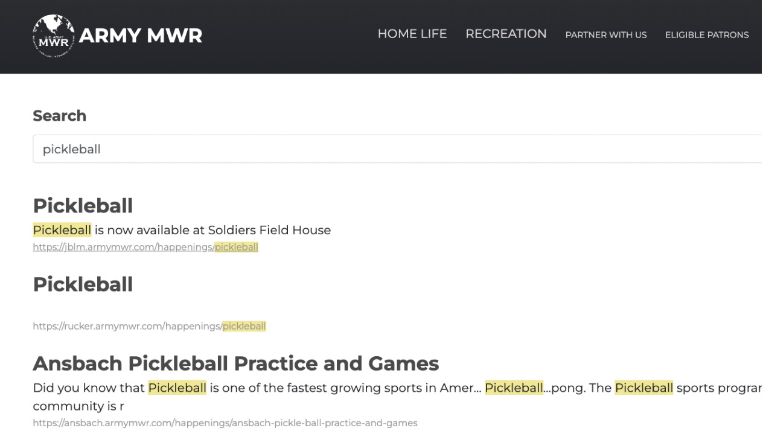At the heart of every successful company is a happy employee who knows what's going on across the entire organization. It can be a real challenge trying to keep hundreds or thousands of people on the same page. If you're striving to establish a positive and productive workplace with your company, collecting official documents, best practices, and the latest company news on an Intranet can be a huge help. Too often, an Intranet will be started and quickly become stale and only serve as another chore for your team. Here are five tips to make your Intranet a place employees find truly useful and love.
Don't let your intranet hold you back. Download our free assessment and discover how to transform your internal communications.
#1 Make it Easy to Contribute Content.
First, consider the user experience (UX) of your Content Management System (CMS). If your CMS is too difficult to use, expect frustrated employees and a lack of fresh content.
Training on the CMS should be easy for content contributors to consume. People learn in many different ways and having multiple training mediums like a combination of text, videos, and live webinars sets all types of learners up for success. When it's time for ongoing training sessions, you'll receive far less pushback if the priority is on easy and engaging training. If you're looking for an easy-to-use three-step training program, we have a blog post written all about it here.
Employees need a little guidance to feel like they're on the right track. Ongoing training comes into play with rapid developments in technology. If active content publishing isn't flowing, try meeting with each department to brainstorm. Take some time to show them some of your resources in your content policy.
This type of interaction instills confidence in you as their leader and helps them know the value of the content they're creating.
#2 Create a Content Expiration Policy
Every Intranet needs a content governance plan. Keeping content fresh and accurate must be the priority. Every topic and page should have an owner responsible for content.
Periodically an email should be sent to the content owner, alerting them to verify if the initial information they provided is still accurate and relevant. Automatically remove the content if the author doesn't respond. If deleting content is too extreme, add a label to the page with a disclaimer mentioning out-of-date information.

#3 Create a Style Guide
A style guide defines the look and feel of design elements used in your website. It should detail the size and format images should be created in. It should make it clear how great content should look in an ideal situation.
It should also cover the tone and editing style of content created. A few tips around the length of content, how to properly summarize content at the top, and the importance of entering accurate metadata for search will make it easier for content creators to know they're doing the right thing.
Don't forget to review your style guide too periodically. As the site is used more your content editors will push the bounds of the original design vision, and it's essential to keep updating the style guide to reflect accurate standards (see point #2 above!)
#4 Search is Key
When it comes to search results on your Intranet, give Elastic Search a try. It provides website owners the ability to offer customizable results. Using a service like Elastic or an equivalent gives you the google type natural language search that people have come to expect without having to make your content public. Expect to have a developer spend some real time configuring and tuning Elastic search to return meaningful results for your content.

Image by: Concrete CMS
It's crucial to invest in tools that index your website's metadata of types. You tag your content and let search know which pieces of content you want in website search results. Tagging and organization help people find the information they are looking for.
In addition to indexing tools, consider utilizing Machine learning (ML) based tagging. While it takes a little time to get and running, it'll automatically tag articles or images once the system is in place. You should always review the tags it generates, but it can improve the speed of creating great content.
#5 It is a Tool, Not a Miracle Machine
Buying a great shop full of tools doesn't mean you've made something people will enjoy. It's just the first step. There's a natural tendency to want to believe the CMS and Intranet will become useful though simply existing, and nothing could be further from the truth. Just like a bulletin board in a break room, someone is going to have to clean that thing up from time to time, get rid of old items, organize what's important, perhaps go out of their way to let people know about key events coming up. You've invested in a tool, don't let your team down by not investing in the time required to build something great with it.
#6 Default to Open
Be aware that not all of your employees may have a license for your program. Or perhaps they do, but it may not be easy to access from their phone or tablet.
If you want to ensure all of your employees are up to date on company news and business information, consider what can be publicly shared. Sharing it outside of your authenticated pages to make it easier to find without having to login. Sharing your non-sensitive content this way could also potentially benefit partners and customers. The Principles of The Open Source Way apply here.
Multi-step workflow slows everything down. When it comes to approval workflow, default to as permissive as possible with a clear audit/ownership trail. Grammatical errors are still a likely possibility. It's far more beneficial to let people publish content quickly and make the occasional correctable mistake rather than to be bogged down by a complex multi-step workflow in an attempt to have everything perform perfectly. Permissive publishing rules will speed things up and instills trust and pride in your employees.
Conclusion
These steps streamline your platform, but they'll also provide open communication and aid in creating an environment in which everyone can thrive and grow together. Keep these six steps in mind when considering how to best make your employees love your Intranet. Best of luck!
